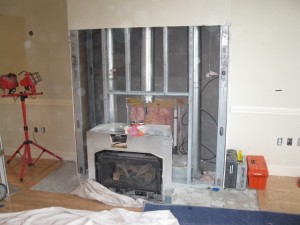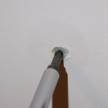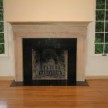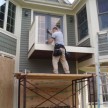Removing A Gas Fireplace
By Robert Robillard on Uncategorized
How To Cap Gas Pipe: Removing A Gas Fireplace

Dear Concord Carpenter,
What is the process for removing a natural gas fireplace?
I’m hoping to remove an existing one, and be able to finish the area such that it appears a gas fire place was never there. Essentially I want to regain the space (probably 20 square feet) that the unused (and never-to-be-used) gas fireplace is taking. The house is on a slab so I presume the gas lines come through the slab (which is a plumbing consideration — how to cap the gas lines? [a DIY job?]
Thanks!
Jason
Removing A Gas Fireplace
Dear Jason,
Typically before removing a gas fireplace you will nned to have a electrician and plumber disconnect the electrical and gas pipe connections. If you’re remodeling this space you will need to deal with the electrical wire buy terminating it in a junction box or making it into an outlet in your new wall.
If the gas pipe is coming trough the slab you may have no choice than to locate it close to or at the meter and disconnect it there. You need to figure out if this gas pipe feeds other appliances along the way. If it does, you will not be able to disconnect the pipe at the meter.
In most situations where the pipe is accessible you would want to trace the pipe back to a joint and cap it there. Alternatively you can also trace it back to the pipe tees to another fixture and terminate the pipe at a that joint. Gas pipe can be capped in a wall.
The layout of the pipe may not make it easy to cap it exactly where you want to unless you have a pipe threader.
In my opinion removing a gas fireplace is a serious DIY project. If you are not qualified or have experience for this type of repair I suggest calling a plumber with a gas fitters license.
Click on this link to see a project where I removed and replaced a gas fireplace.
How To Cap A Gas Pipe:
1. Shut off the gas at the meter,
2. Remove all gas pipe back to area desired.
3. Use the yellow Teflon tape, because it is approved and has consistent thickness, or use Teflon pipe dope.
4. Use a black gas pipe cap. Do not use a plug in a fitting. A plug can crack if tightened to tight.
5. A shorter section of pipe is useful to replace a longer section at the joint.
6. Turn the gas back on and use a 50%mixture of dish washing soap and water. Use a spray bottle and spray all piping connections that have been disturbed. If no bubbles show up you did it right.
7. Repeat the process from step 1 through 6 if you see bubbles or call a plumber.
8. Relight the pilots on the water heater or any other appliances as needed.








